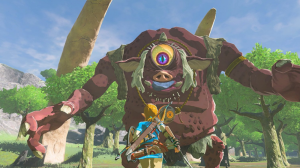One of the hardest things for me to do with Game-Wisdom is look at games that just aren’t measuring up to my expectations. I have played amazing games that have hooked me for hours, and games that lost me within minutes. I’ve said this before, but it’s easy to review a great game, but try reviewing something that didn’t work for you.
While it is easy for people to go on YouTube and blast games and their developers, I just can’t rip into someone. No one outright has the goal of making bad video games, and trying to define what one is can be a tricky process.
The Three Kinds of Disasters:
When we talk about video games, there are three kinds that are considered bad. First are the intentional ones: Titles that are asset flips or direct clones meant for a slash and burn strategy. These titles were never meant to be hits, but fleece people out of their money and then quickly get taken off of Steam or pushed to the bottom of the heap. These titles are easy to spot, and I never play them to begin with.
Second is what I call “Grand Spectacles.” These are titles that were built up thanks to hype and pedigree, but still massively bombed; in some cases, taking the studio down with them. Some examples would be Mass Effect Andromeda, X-Men Destiny, Dead Space 3, and Godus.
The problem with talking about these games is that their failures are usually very specific. Sometimes the publisher intervened, maybe there was behind the scenes drama, but whatever the case, it’s hard to take these as learning points for a new developer.
Then we have the third kind, the games that quietly fail. As we’ve talked about many times over, for every title that does make it to the top, there are dozens, if not hundreds at this point, more that don’t. Looking at these titles is when you need to have an understanding of game design and what it means to be a developer.
Death By a Thousand Issues:
There is no such thing as an exact technique for game design, and while that means anyone can do it, it also means it can be hard to learn.
A long time ago, I did a post about the differences in AAA and indie development in terms of game quality. AAA games may not be the most unique, but they offer refinements and polish that come from years of experience (and all that money.) From the indie space, we can see titles that we won’t get anywhere else, but they tend to lack that level of polish.
Even if you are a veteran from a studio, being on your own and having to manage all aspects of a game’s development can be tough. These days, it’s a lot harder for an indie developer to stand out, and any design issues can be the metaphorical nail in the coffin for your game.
Not only do you get one chance to make a good first impression, but the bar has been raised on game quality. I’ve lost count of the number of games I’ve played that I run immediately into polish or design issues in the first 10 minutes of play.
The sad part is that at this point, those issues are grounds for me to stop playing a game; no matter how well the game may be several hours from now. This is why one of the most essential elements of game design is play testing.
There is never a point in game development where you are done with letting people look at your game. For any developers reading this right now, you have no valid excuse for not getting playtesting done on your title. I don’t care if your game is 2 hours long, 20 hours long, or 100+; you need people to look at your game.
Issues like UI design, quality of life, or just general gameplay complaints don’t take hundreds of hours to find; they’re usually caught within minutes of play. That right there is why I’ve become very critical of games that have these problems.
With that said, there is another point developers have to understand about “bad games.”
Reading the Market:
Sometimes, you can finish a game’s development as perfect as you could make it, and it still doesn’t sell. There are no guarantees when it comes to releasing a game and knowing which ones are going to take off. You cannot plan for your game to become the next PubG or Undertale.
Another trap that I see new developers falling into is not looking outside their own circles about what’s going on with games or design. One of the harshest lessons to learn about being successful in the game industry is about understanding that sometimes the game you want to make is not the game that’s going to be successful.
This is a continuation of our last point about the importance of iteration and playtesting. Being able to take and process feedback is an essential part of growing as a game designer. When it comes to reading the market, it’s about understanding how your game compares to its closest peers.
It’s very important not to design your game in your own personal bubble, but figure out how other examples of the genre have grown and evolved. This is not about copying someone else’s game, but looking at how their game was received and what aspects the audience liked the most. As genres have grown, so have the experiences the consumer expects from it.
If you’re going to call your game an “ARPG,” or “Souls-Like”, or even “Battle Royale,” you need to understand what the core elements of those designs are. More importantly, you need to comprehend what parts could be improved upon, and make sure that your game doesn’t have those issues.
Genres, and by extension their game design, can change from when you start a project until it’s done. If you’re trying to compete with a popular genre, or just the big name example, then you have to either go bigger than that one, or create a game in a different direction. A harsh lesson designers learned from the MMO crash of the ’00s is that you can’t chase the top dog of a genre and expect to succeed.
Learning From Failure:
As I said earlier, game developers don’t set out to make a bad game and this is why I can never really rip apart titles; even ones I didn’t like.
Far too many games fail with a whimper instead of a bang, and that makes it hard to learn why. You can say things like, “Maybe I released it at the wrong time,” or “Consumers didn’t understand my video game,” but that doesn’t help you when it comes to growth.
“The cream will rise to the top,” is applicable when it comes to the best games of each year. However, even with their quality, those developers always did more than just design a good game. There’s research, PR, and work behind the scenes to make sure that these titles had the best chance of impacting the market.
So much can go wrong with a video game that you may never realize until it’s too late. At the end of the day if you want to take that step from being a hobbyist to a game designer, then you must do more than just make a game for two to five years of your life. Nothing in the industry is guaranteed, but that doesn’t mean you can just throw ideas against the wall and see what sticks.
If you are fortunate enough to be able to keep going after a failed project, then take what you learned and move forward, as not everyone gets a second chance.



